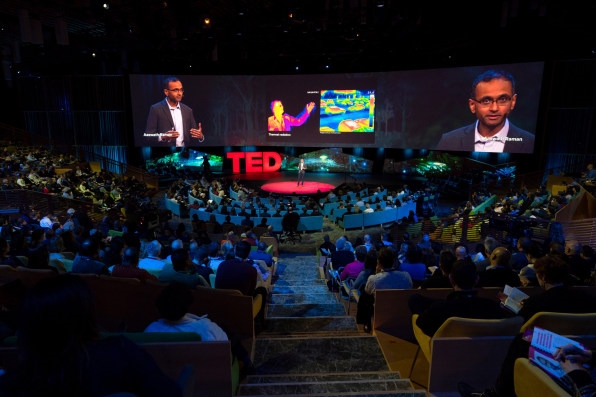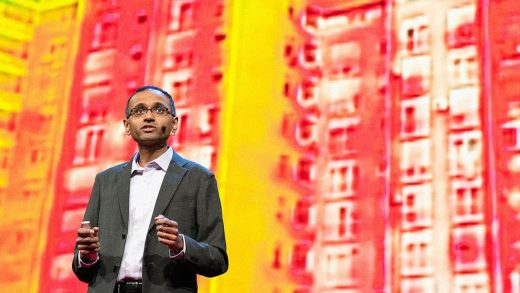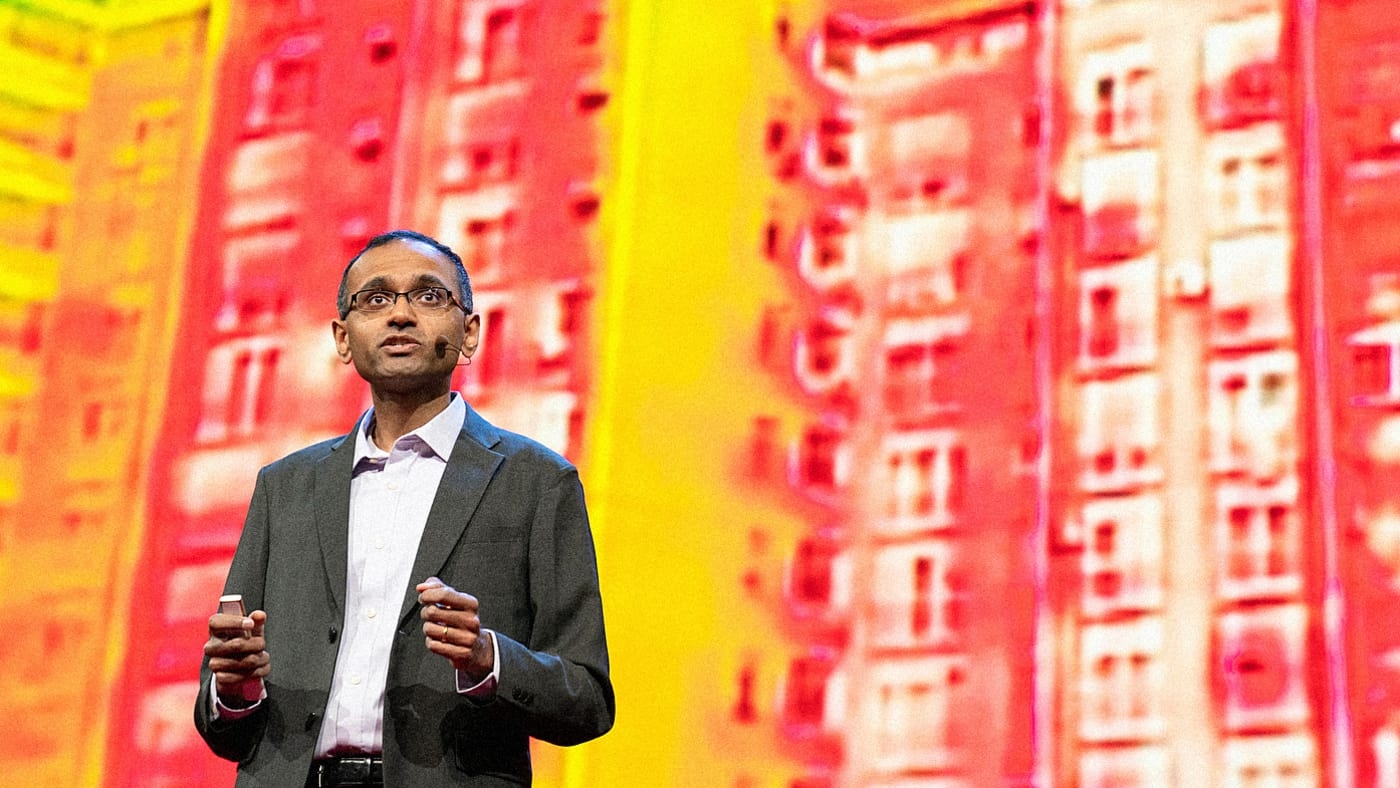Could This New Material Mitigate The Climate Damage From The Global Air Conditioning Boom
Scientist Aaswatch Raman grew up traveling every summer from his home in Canada to visit his grandparents in Mumbai. In his memories, he’s hanging out by their home’s air conditioner, looking for respite from the hot and humid summers that did not exist in Canada.
Today, he’s still always around air conditioners, but for a very different reason: He’s using his research to figure out a way to run them more efficiently, and without exacerbating the greenhouse gas burden these systems are currently creating for our planet.
Currently, 17% of global electricity is used for cooling, Raman tells the audience during his talk at TED 2018 in Vancouver. “Collectively, these systems account for 8% of global greenhouse gas emissions,” he says, but by 2050, our energy used for cooling will grow sixfold as global temperatures rise even higher.

“We’re caught in a feedback loop,” Raman says. “The warmer our planet gets, the more we’re going to need cooling systems,” but those systems also produce a lot of emissions that contribute to climate change.
Raman’s startup, SkyCool, and his lab at the University of Pennsylvania, though, are testing a new process that could improve the efficiency of cooling systems by as much as 20%, and as a result, reduce the amount of emissions they produce.
The technology they’re using is based on infrared radiation, the process by which objects give off heat. Much of that heat, which is measured in wavelength micrometers, is then trapped by our atmosphere. But exceptionally high radiation wavelengths–between eight and 13 micrometers–slip through the atmosphere, and into the cold expanse of space. Essentially, surfaces in that 8- to 13-micrometer range tend to lose heat faster than they can replenish it–either via the warmth of the sun or heat leaving other objects nearby.
Grass is an example of such a surface. On a sunny day, an open expanse of grass will still feel relatively cool when you sit on it, because that grass is losing heat at a faster rate than say, a piece of wood sitting nearby under the same sunlight. And at night, the speed at which grass loses heat without the warmth of the sun to re-heat it can cause frost to form, even when the ambient air temperature hovers above freezing. You’ll notice, though, that grass under a tree does not form frost, because trees emit heat downward at a greater rate than the atmosphere. For this system to work, a surface has to be directly facing the sky, with no interference.
This phenomenon is often called “night sky cooling,” because the warmth of the sun generally slows it, or prevents it from happening. But Raman and his team developed a proprietary material to convert the infrared light leaving a surface into the wavelength range that would cast its heat into space, and cool the object from which it flows. The material also deflects the sun’s rays to speed up cooling.
Through modeling, Raman and his team have shown that this material, integrated into large-scale cooling systems, would cut the electricity demands of cooling by over 20%–if the systems themselves aren’t overheating, they can essentially operate more effectively. SkyCool will be running a commercial pilot of its material integrated with a cooling system in the next year or two.
But the implications don’t stop there, Raman says. He imagines that this advanced material could also help solar panels function more effectively–as solar cells heat up under the sun, they become less efficient. And large panels of this material could also slow the evaporation of water, and boost conservation efforts.
“We can use the cold darkness of space to improve every energy process on Earth,” he says.
(17)



